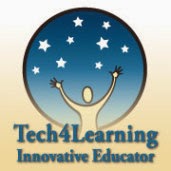I'm thinking the title of this post might be the title of my book.
Working to change culture in real classrooms- with real students and all the restrictions, limitations, and downright clutter that characterizes real teaching is challenging. It's also the only thing that really, truly matters. There is so much talking, writing, asserting, theorizing, criticizing and debating. But, sometimes I wonder if, when all is said and done, more is said than done.
My last job, working to create a new school culture, was also challenging and fulfilling in it's own ways. But I always knew, in the back of my mind, that I was one step removed from the possibilities and the difficulties. I'd listen to teachers tell me I didn't understand, that it was harder than I made it seem. And I knew they were right. But I also knew that I was right about what needed to be done.
I knew there would be highs and lows. I knew, didn't I, that
learning is messy.
So, now I have my own stories of messiness to celebrate, share and get over. I think today's messy story is a good one. I went from so high, best-class-ever, to failure, disappointment and a splitting headache in a span of less than 2 hours.
Opportunity
It started with an email I received from the Google teacher list. Google, as part of their public launch of
Google Maps Street View of the Galapagos Islands (including underwater views!) was offering a virtual field trip experience. They were looking for two classes interested in chatting via Hangout with some of the photographers and conservation scientists who worked on the project.
It happened quickly. On Tuesday afternoon, I was notified of our acceptance to participate in Thursday's Hangout. I scrambled to notify parents (as we needed permission slips for the live broadcast) and prepare students. I wrote "Galapagos Islands" on the board. No one had heard of it. I instructed students to go home and learn something about the Galapagos, from whatever source they wished.
The High
The next day students came in brimming with excitement. One of my 4th graders had created a book, using
Book Creator, to share what she'd learned about the Galapagos. She was careful to make sure we knew that she had only used Creative Commons licensed images from
Pics4Learning. She had even taken video of her bird in her backyard to show what she thought the Galapagos was like.
I hadn't
planned to spend a lot of time having students share but in that moment, lesson plans took a back seat to
learning. It was amazing, definitely the best teaching moment I've had this year.
Every student wanted to share what they did and what they learned. We watched videos, looked at Wikipedia and viewed captivating images. Curriculum connections flowed seamlessly from language arts to geography to math to digital citizenship to how-to-read a Wikipedia page. The one student who had not done the homework was obviously upset. I believe that next time that child will be much more likely to "remember" the assignment.
 |
| Looking at Wikipedia |
 |
| Sharing her notes |
And the low...
Then came the time for the G+Hangout. Jobs were assigned. Students were excited. Very excited. We went to the library. It felt a bit stressful for me, trying to get everyone settled, make sure we were on time connecting to the hangout, and make sure that students with roles and responsibilities (photographing, videoing, asking questions, taking notes, etc) knew what to do.
We connected to the Hangout. We could see and hear the other classroom, the people from Google, the researchers from Ecuador and Australia. Our mic was muted, but our students were ready to step forward and ask their questions when the time was right.
We waited. And we waited.
Technical difficulties at Google were preventing the live broadcast that was, for Google, the whole point of the hangout. I typed into the chat, telling them that we only had a certain amount of time, that we were so excited....
We waited some more. While we waited I showed the students the amazing Street View tours and images. It felt a bit chaotic because the hangout was still open, and we could hear them trying to fix the issues.
We had to leave to go to lunch at 12:45. Students begged to eat in the library and keep waiting, but we decided, after 45 minutes of waiting, to call it a day. We were all extremely disappointed, and some students were angry, saying, "What a waste of time!"
I saw later, that the Hangout did finally take place and Google got the live broadcast they wanted. It was no big deal for them to say we have one classroom here with us (rather than the two that were supposed to be).
Learning from Everything
I'm not sure where to go from here. I thought maybe I would, at least, receive an apology email from Google that I could share with students. But, sadly, I have noticed over the years that many companies want to connect with students and schools mainly for their own purposes. I guess it looked cool to have a school in the Hangout.
But what about the kids?
The woman who organized the Hangout told me she used to be a teacher. Has she forgotten what it's like to quickly pull together 30 students and prepare them for something like this? It's not easy to do, and it's not easy to explain away the disappointment when it doesn't work.
We are learning about the
7 habits of highly effective people, and right now we are focusing on habit #1: Be Proactive. So, in my next-day discussion with students, we talked about being proactive in our response to disappointment. We talked about how we learn from every situation, even if what we learn is not what we hoped or planned to learn.
As students prepared to write their reflective posts about the week, I asked them to think about using proactive language instead of blaming. We talked about how it's ok to express feelings and how that is different than blaming. So, maybe that is one thing we've learned for now. Things don't always work as planned when you take risks and try things.







+on+Twitter.jpg)

.jpg)


+Twitter+_+Search+-+%23gra13oomm-1.jpg)

+on+Twitter.jpg)

.JPG)







.jpg)

























